Multilingualism in the North: From Baklava to Tre Kronor
Abstract
:1. Introduction
the language of public road signs, advertising billboards, street names, place names, commercial shop signs, and public signs on government buildings combines to form the linguistic landscape of a given territory, region, or urban agglomeration.
2. Materials and Methods
3. Results
3.1. Descriptives
3.2. What Forms of Multilingualism Do We Find?
4. Discussion
5. Conclusions: Whose Languages?
Author Contributions
Funding
Ethics Statement
Informed Consent Statement
Data Availability Statement
Conflicts of Interest
Appendix A
| Variable | Model 1 Multilingual Sign | Model 2 Monolingual Sign | Model 3 Monolingual Sign in Swedish | ||||||
|---|---|---|---|---|---|---|---|---|---|
| Coeff. | Sign. | Odds Ratio | Coeff. | Sign. | Odds Ratio | Coeff. | Sign. | Odds Ratio | |
| Placement/On building | 0.553 | 0.329 | 1.704 | 0.230 | 0.636 | 1.258 | 0.085 | 0.863 | 1.089 |
| Placement/On pole | −1.288 | 0.118 | 0.276 | 2.165 | 0.006 *** | 8.717 | 1.839 | 0.013 ** | 6.291 |
| Placement/Message board | 0.785 | 0.224 | 2.193 | 0.003 | 0.995 | 1.003 | −0.175 | 0.775 | 0.840 |
| Placement/Sidewalk | 0.885 | 0.386 | 2.422 | 0.441 | 0.653 | 1.555 | 0.485 | 0.624 | 1.624 |
| Placement/Parking machine | 0.164 | 0.813 | 1.178 | 0.642 | 0.323 | 1.901 | 0.575 | 0.386 | 1.776 |
| Placement/Semi Movable | 0.716 | 0.284 | 2.045 | 0.196 | 0.750 | 1.216 | −0.192 | 0.753 | 0.825 |
| Medium/No medium | 0.045 | 0.936 | 1.046 | 0.708 | 0.144 | 2.030 | 0.746 | 0.117 | 2.108 |
| Medium/Poster | 1.847 | 0.001 *** | 6.340 | −1.037 | 0.036 ** | 0.355 | −1.076 | 0.027 ** | 0.341 |
| Medium/Sticker | 1.123 | 0.056 * | 3.073 | −0.357 | 0.489 | 0.700 | −0.293 | 0.564 | 0.746 |
| Medium/Piece of paper | 1.058 | 0.060 * | 2.879 | −0.259 | 0.597 | 0.772 | −0.231 | 0.632 | 0.794 |
| Medium/Sandwich board | 1.167 | 0.233 | 3.212 | −1.011 | 0.298 | 0.364 | −1.273 | 0.190 | 0.280 |
| Medium/Product | 1.093 | 0.142 | 2.984 | −0.361 | 0.601 | 0.697 | −1.510 | 0.025 ** | 0.221 |
| Author/Company | −0.660 | 0.017 ** | 0.517 | 0.859 | 0.002 *** | 2.360 | 0.893 | 0.001 *** | 2.441 |
| Author/Authority | −0.452 | 0.156 | 0.636 | 0.608 | 0.054 * | 1.836 | 0.877 | 0.006 *** | 2.405 |
| Author/Non-profit organization | −1.151 | 0.001 *** | 0.316 | 1.318 | 0.000 *** | 3.737 | 1.476 | 0.000 *** | 4.373 |
| Content/Company name | −0.256 | 0.720 | 0.774 | 1.619 | 0.014 ** | 5.048 | 0.832 | 0.200 | 2.299 |
| Content/Information | 0.559 | 0.378 | 1.749 | 0.813 | 0.158 | 2.256 | 1.004 | 0.093 * | 2.730 |
| Content/Advertisement | 0.724 | 0.294 | 2.063 | 0.654 | 0.309 | 1.923 | 0.857 | 0.196 | 2.356 |
| Content/Rules | −0.076 | 0.921 | 0.926 | 1.411 | 0.050 ** | 4.100 | 1.607 | 0.029 ** | 4.987 |
| Content/Art | −0.114 | 0.902 | 0.893 | 1.499 | 0.089 * | 4.476 | 1.544 | 0.085 * | 4.683 |
| Constant | −1.958 | 0.011 | −1.098 | 0.080 | 0.333 | −1.306 | 0.045 | 0.271 | |
| LOG-L | 915.3 | 923.1 | 954.5 | ||||||
| N | 858 | 858 | 858 | ||||||
| 1 | The language of place-making. A mixed-method analysis of linguistic landscapes FORMAS 2018-01528 (2019–2021) |
| 2 | More specifically art. 23, 14§ (Government of Sweden, The school act 2010:800), amendment in government’s bill 2015/16:173. |
| 3 | Swedish state fund that supports non-profit organizations and voluntary associations to help improve conditions for children, young people and people with disabilities. |
| 4 | The materials collected during our ethnographic fieldwork do not include any personal data. No photos showing addresses or individuals were taken. Ethical considerations gave also attention to sensitive places, for instance, women’s shelters, that were avoided. |
| 5 | In comparison with other urban environments documented within the same project, here we found very few stickers, and no traces of old torn, weather-eroded signs either. |
References
- Backhaus, Peter. 2006. Multilingualism in Tokyo: A look into the linguistic landscape. In Linguistic Landscape. A New Approach to Multilingualism. Edited by D. Gorter. Clevedon: Multilingual Matters, pp. 52–66. [Google Scholar]
- Barni, Monica, and Carla Bagna. 2010. Linguistic Landscape and Language Vitality. In Linguistic Landscape in the City. Edited by Elana Shohamy, Eliezer Ben-Rafael and Monica Barni. Bristol: Multilingual Matters. [Google Scholar] [CrossRef]
- Blommaert, Jan. 2013. Ethnography, Superdiversity and Linguistic Landscapes: Chronicles of Complexity. Clevedon: Multilingual Matters. [Google Scholar]
- Cocq, Coppélie, Lena Granstedt, Eva Lindgren, and Urban Lindgren. 2020. Developing Methods for the Study of Linguistic Landscapes in Sparsely Populated Areas. Umea: Department of Geography, Umea University. [Google Scholar]
- Coulmas, Florian, and Patrick Heinrich. 2005. Preface. International Journal of the Sociology of Language 2005: 1–2. [Google Scholar] [CrossRef]
- Gorter, Durk. 2019. Methods and Techniques for Linguistic Landscape research: About Definitions, Core Issues and Technological Innovations. In Expanding The Linguistic Landscape. Linguistic Diversity, Multimodality and the Use of Space as a Semiotic Resource. Edited by Martin Pütz and Neele Mundt. Bristol: Multilingual Matters, pp. 38–57. [Google Scholar]
- Government of Sweden. Swedish Act on National Minorities and Minority Languages (2009:724).
- Government of Sweden. School Act (2010:800).
- Granstedt, Lena, Coppélie Cocq, Eva Lindgren, and Urban Lindgren. Forthcoming. Hybrid language use in urban landscapes of Northern Sweden. In Sociolinguistic Variation in Urban Linguistic Landscapes. Edited by Sofie Henricson, Väinö Syrjälä, Carla Bagna and Martina Bellinzona Studia Fennica Linguistica. Helsinki: SKS.
- Grenoble, Lenore A., and Lindsay J. Whaley. 2006. Saving Languages: An Introduction to Language Revitalization. Cambridge: Cambridge University Press. [Google Scholar]
- Landry, Rodrigue, and Richard Y. Bourhis. 1997. Linguistic landscape and ethnolinguistic vitality: An empirical study. Journal of language and Social Psychology 16: 23–49. [Google Scholar] [CrossRef]
- Lind, Katarina. 2016. Olaglig undervisning i modersmål snart laglig. Svenska Dagbladet. July 30. Available online: https://www.svd.se/olaglig-undervisning-i-modersmal-snart-laglig (accessed on 28 October 2021).
- Litvinskaya, Alena A. 2010. Linguistic landscape of “Little Russia by the Sea”, A multilingual community in a Brooklyn Area of New York City. Ann Arbor: ProQuest Dissertations Publishing. [Google Scholar]
- Malinowski, David. 2008. Authorship in the linguistic landscape: A Multimodal-Performative View. In Linguistic landscape: Expanding the Scenery. Edited by E. Shohamy and D. Gorter. New York: Routledge, pp. 107–25. [Google Scholar]
- Moriarty, Mairead. 2014. Languages in motion: Multilingualism and mobility in the linguistic landscape. International Journal of Bilingualism 18: 457–63. [Google Scholar] [CrossRef] [Green Version]
- Pietikäinen, Sari. 2014. Spatial interaction in Sámiland: Regulative and transitory chronotopes in the dynamic multilingual landscape of an indigenous Sámi village. International Journal of Bilingualism 18: 478–90. [Google Scholar] [CrossRef]
- Reh, Mechthild. 2004. Multilingual writing: A reader-oriented typology—With examples from Lira Municipality (Uganda). International Journal of the Sociology of Language 2004: 1–41. [Google Scholar] [CrossRef]
- Sahlin, Lukas. 2016. Rektorn bröt mot lagen—det gav honom stort pris: “Känns overkligt”. Allehanda. April 14. Available online: https://www.allehanda.se/2016-05-26/rektorn-brot-mot-lagen--det-gav-honom-stort-pris-kanns-overkligt (accessed on 4 May 2022).
- Vandenbroucke, Mieke. 2016. Socioeconomic stratification of English in globalized landscapes: A market-oriented perspective. Journal of Sociolinguistics 20: 86–108. [Google Scholar] [CrossRef]
- Woldemariam, Hirut, and Elizabeth Lanza. 2015. Imagined community: The linguistic landscape in a diaspora. Linguistic Landscape 1: 172–90. [Google Scholar] [CrossRef]
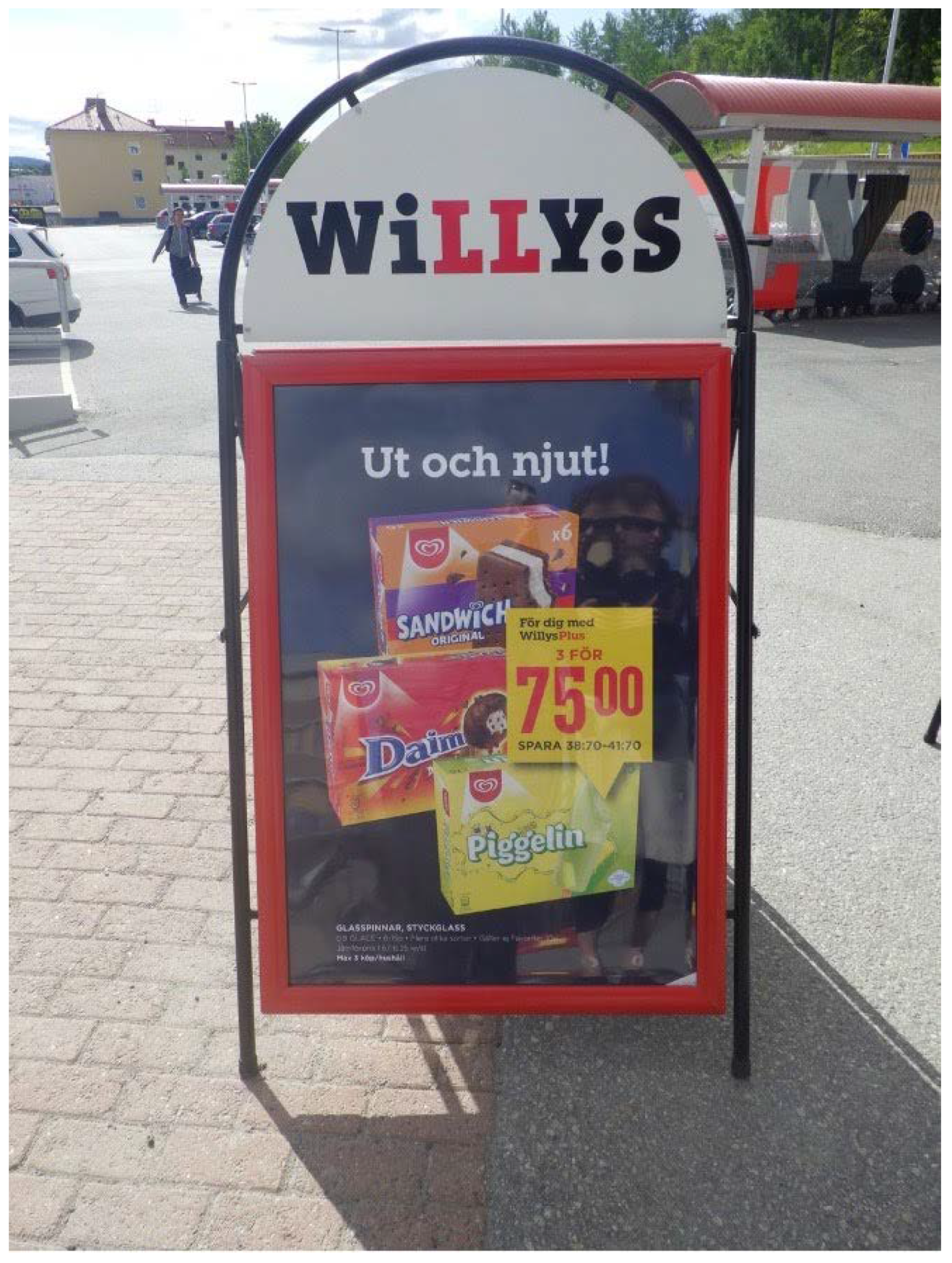

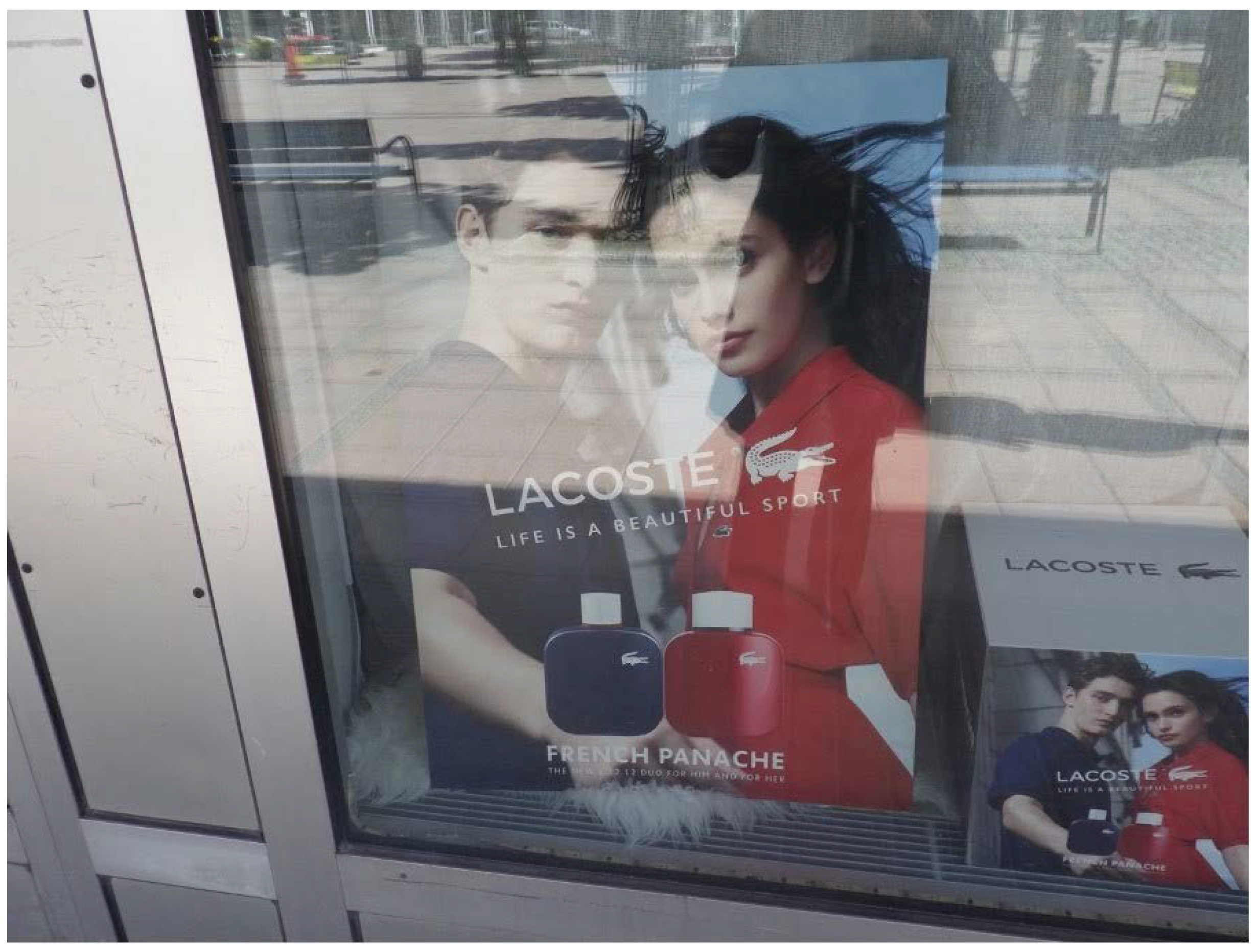
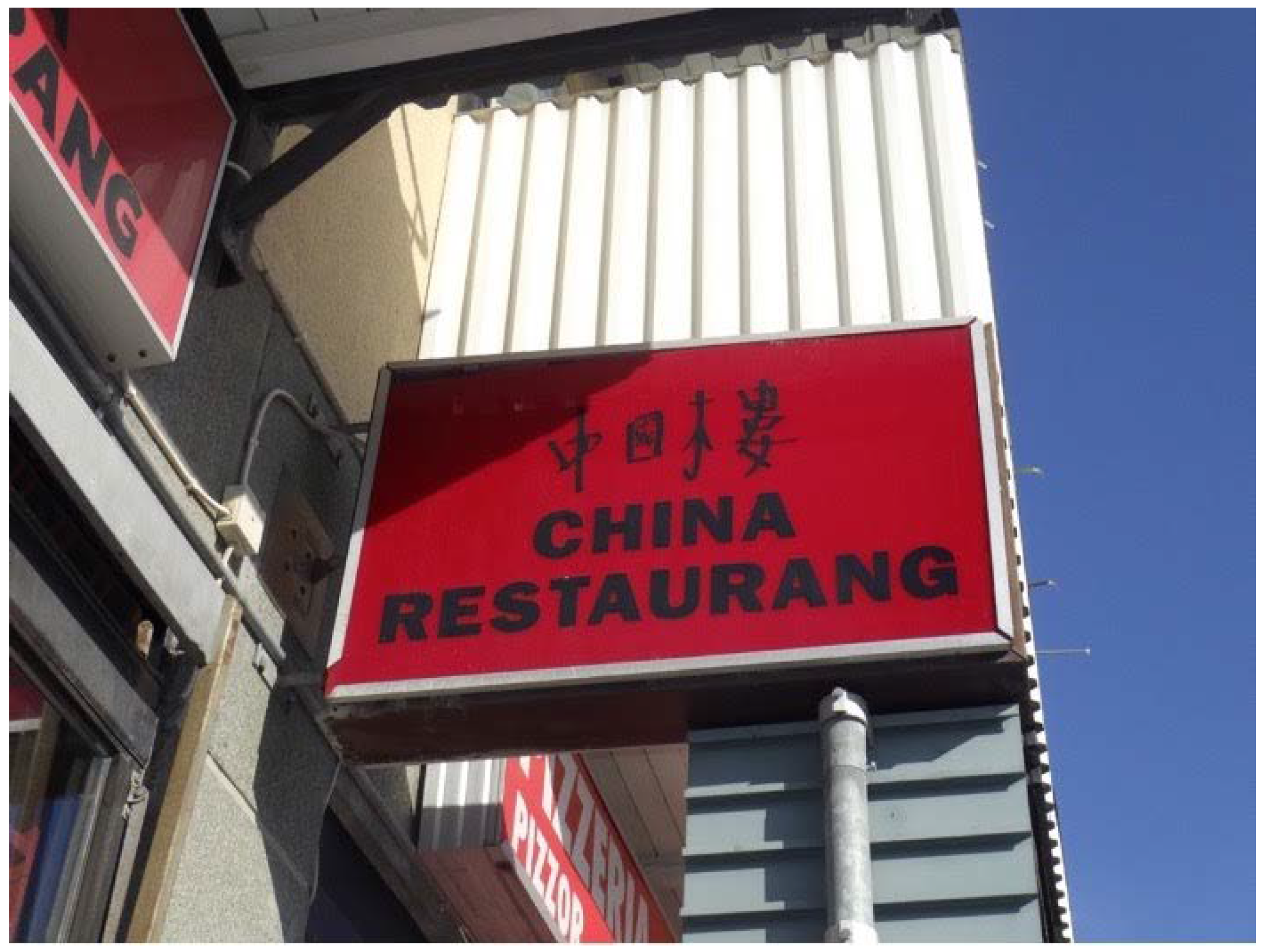
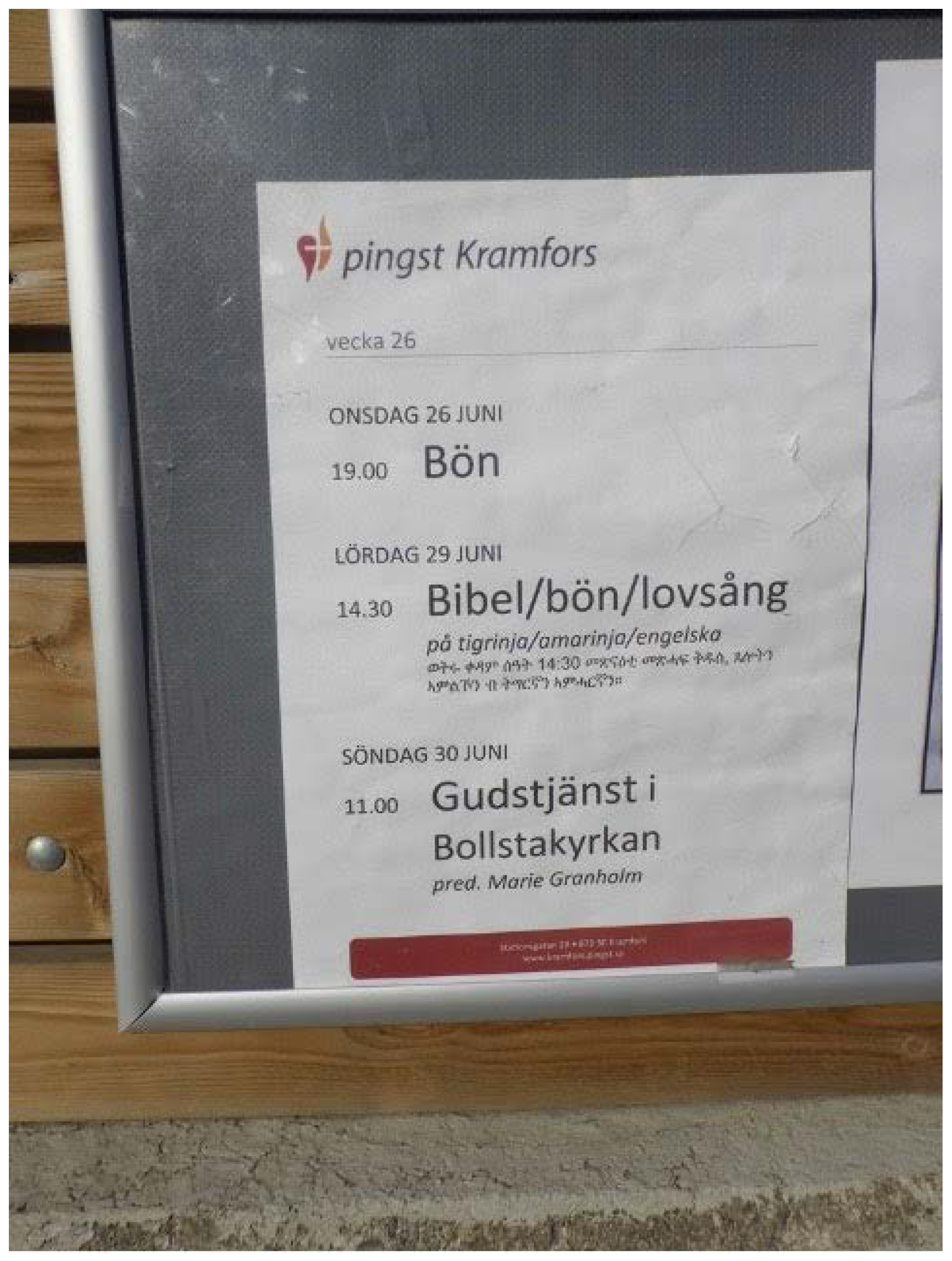
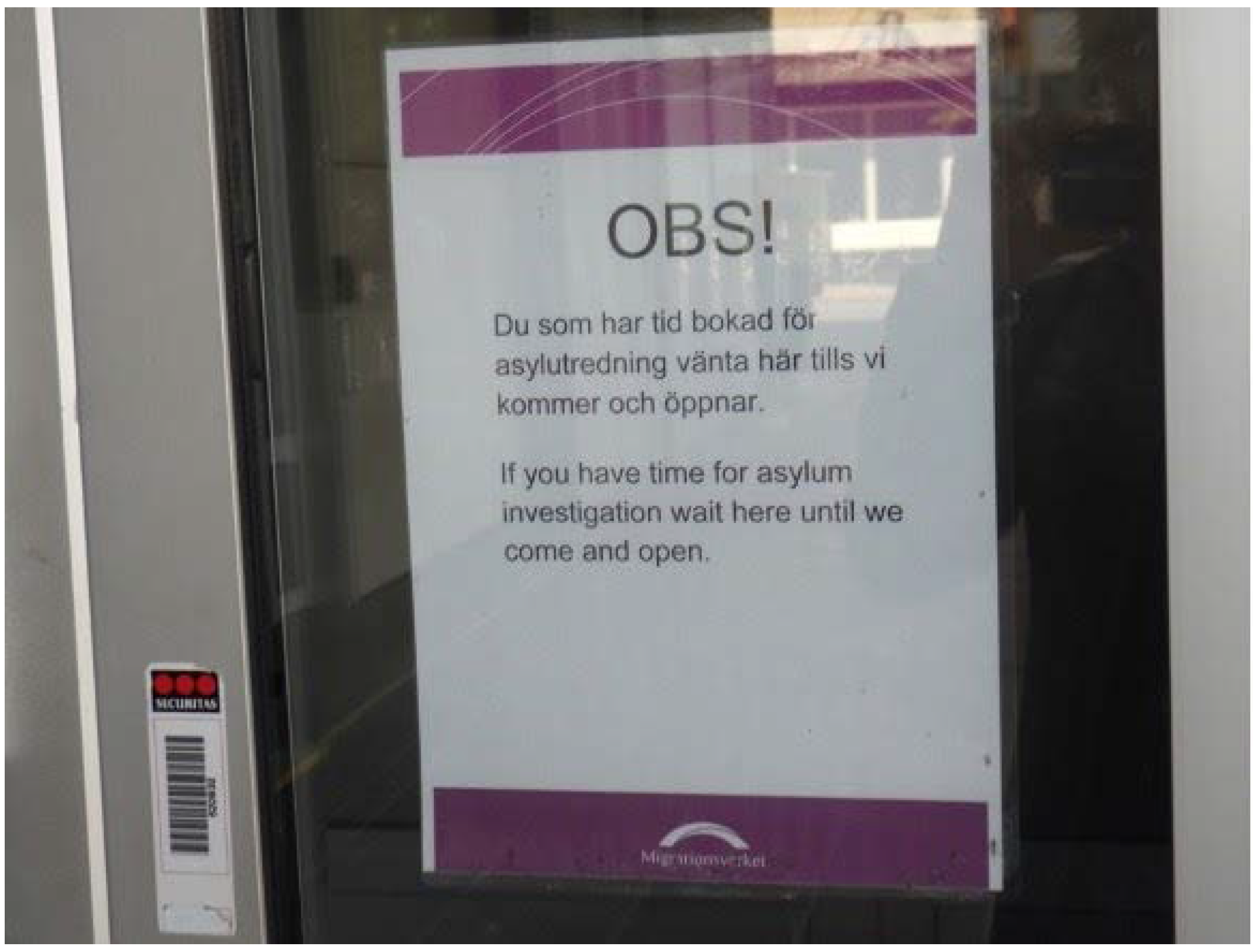
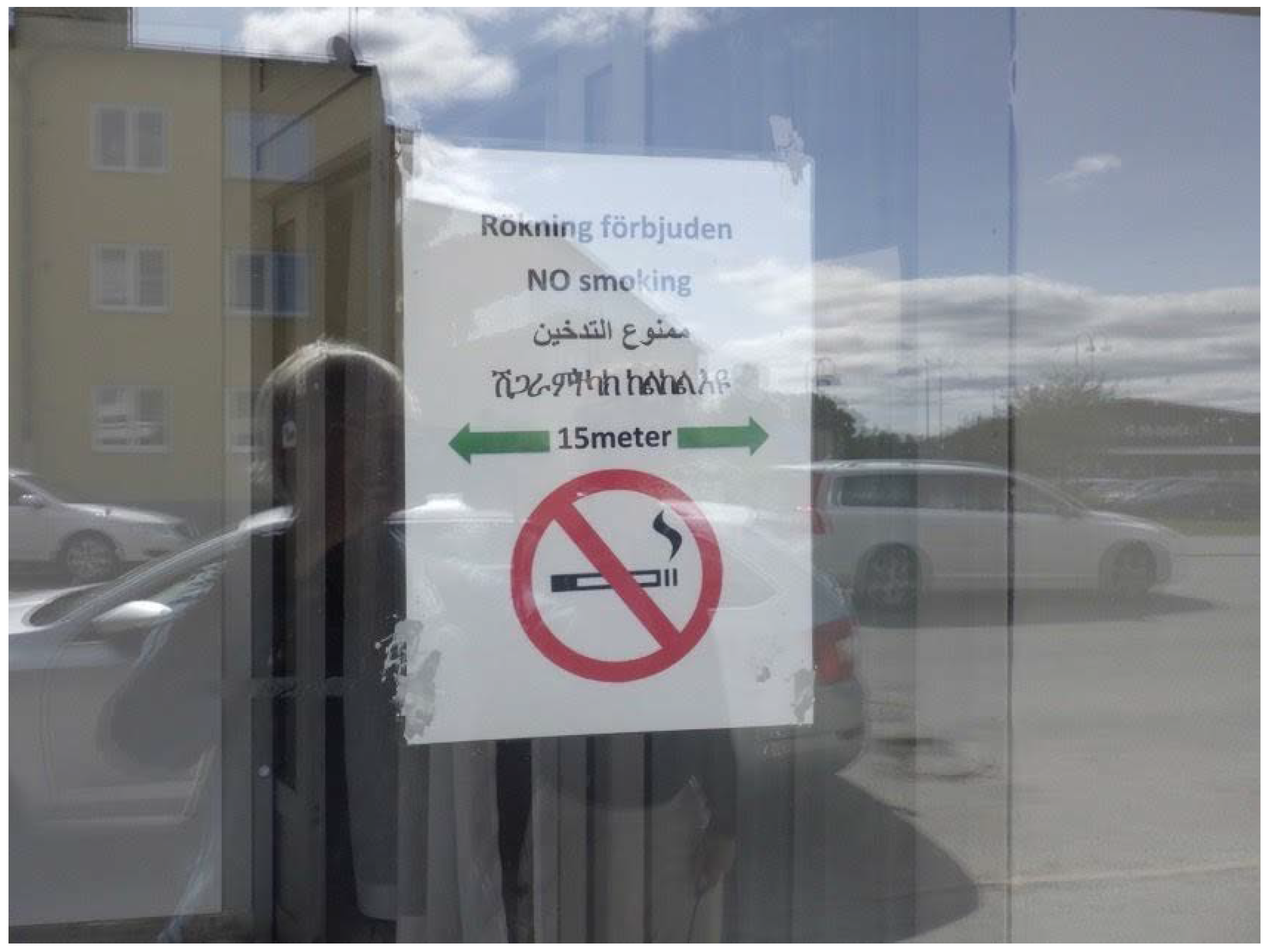
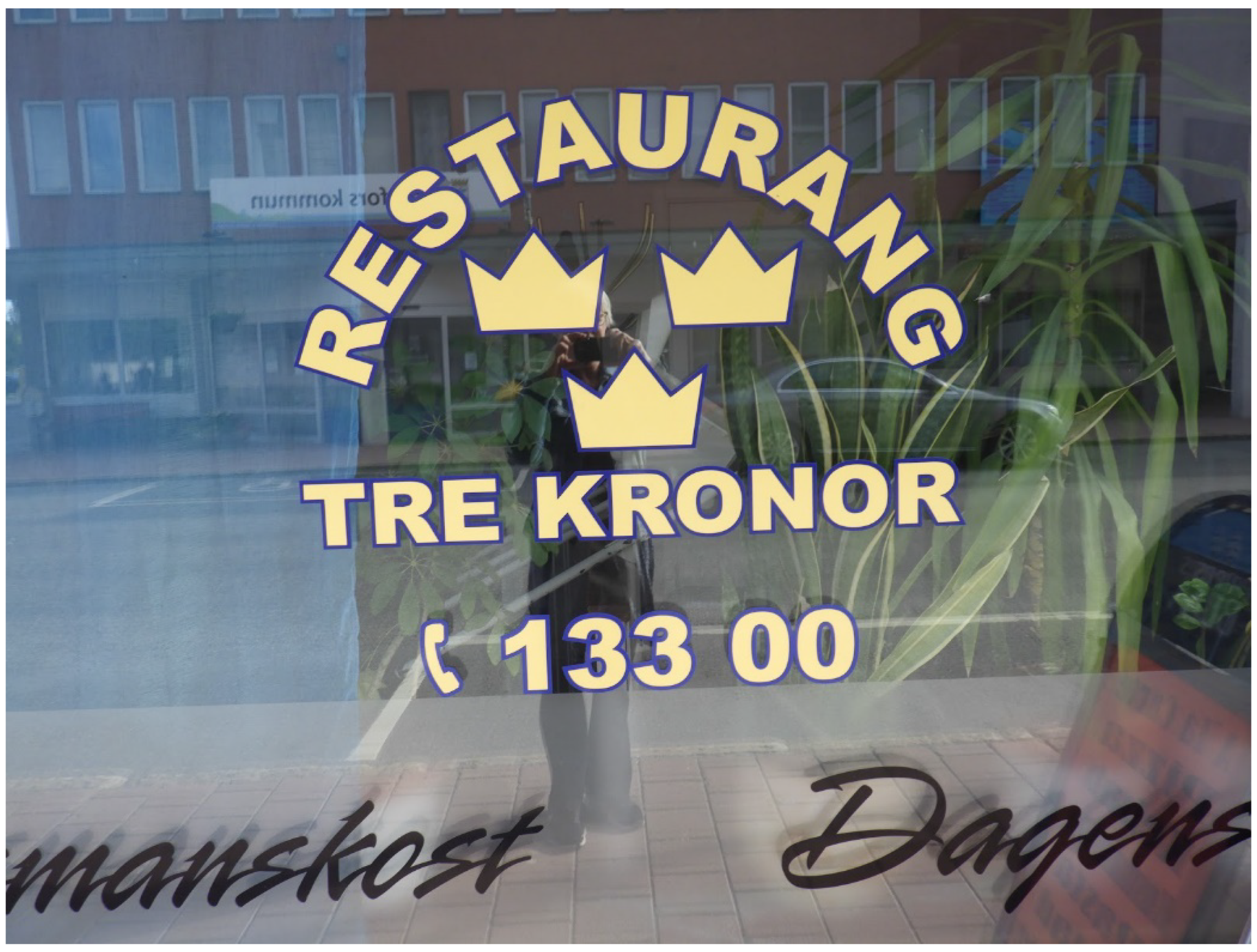
| Author | Number of Signs | % of Signs |
|---|---|---|
| Authorities | 208 | 24.47 |
| Companies | 454 | 53.41 |
| Organisations | 96 | 11.29 |
| Private actors | 6 | 0.71 |
| Multiple | 36 | 4.24 |
| Other | 50 | 5.88 |
| Function | Number of Signs | % of Signs |
|---|---|---|
| Art | 24 | 2.82 |
| Commercials | 66 | 7.76 |
| Company name | 100 | 11.76 |
| Graffiti | 1 | 0.12 |
| Information | 592 | 69.65 |
| Menu | 8 | 0.94 |
| Opinion | 1 | 0.12 |
| Rules & regulations | 58 | 6.82 |
| Language | Number of Signs | % of Signs |
|---|---|---|
| Swedish | 564 | 94.63 |
| English | 27 | 4.53 |
| German | 0 | 0 |
| French | 0 | 0 |
| Hybrid | 3 | 0.50 |
| Unclear | 1 | 0.17 |
| Other | 1 | 0.17 |
| Main Language | Additional Languages | |||
|---|---|---|---|---|
| Number of Signs | % | Number of Occurrences | % | |
| Swedish | 216 | 84.1 | 16 | 4.86 |
| English | 30 | 11.76 | 177 | 53.8 |
| German | 1 | 0.39 | 0 | 0 |
| French | 0 | 0 | 11 | 3.34 |
| Hybrid | 1 | 0.39 | 39 | 11.85 |
| Unclear | 2 | 0.78 | 35 | 10.64 |
| Other | 5 | 1.96 | 51 | 15.50 |
Publisher’s Note: MDPI stays neutral with regard to jurisdictional claims in published maps and institutional affiliations. |
© 2022 by the authors. Licensee MDPI, Basel, Switzerland. This article is an open access article distributed under the terms and conditions of the Creative Commons Attribution (CC BY) license (https://creativecommons.org/licenses/by/4.0/).
Share and Cite
Cocq, C.; Granstedt, L.; Lindgren, E.; Lindgren, U. Multilingualism in the North: From Baklava to Tre Kronor. Languages 2022, 7, 124. https://doi.org/10.3390/languages7020124
Cocq C, Granstedt L, Lindgren E, Lindgren U. Multilingualism in the North: From Baklava to Tre Kronor. Languages. 2022; 7(2):124. https://doi.org/10.3390/languages7020124
Chicago/Turabian StyleCocq, Coppélie, Lena Granstedt, Eva Lindgren, and Urban Lindgren. 2022. "Multilingualism in the North: From Baklava to Tre Kronor" Languages 7, no. 2: 124. https://doi.org/10.3390/languages7020124
APA StyleCocq, C., Granstedt, L., Lindgren, E., & Lindgren, U. (2022). Multilingualism in the North: From Baklava to Tre Kronor. Languages, 7(2), 124. https://doi.org/10.3390/languages7020124








